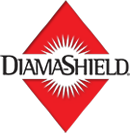FAQ
Q. What is Polished Concrete?
A. Polished concrete surfaces are achieved through a process of mechanical grinding, chemical densification and finish polishing. The grinding process typically starts with course grit metal bond diamond abrasives and progresses through a series of finer grits until the floor is clean, smooth and free of large scratch patterns. Penetrating chemical densifiers are applied to harden the substrate, close concrete pores and improve shine and reflectivity. Resin bond diamond polishing pads are used to produce high gloss finishes that are attractive and easy to clean.
Q. Where is Polished Concrete Commonly Used?
A. Polished concrete is the smart flooring choice for almost any type of building. It is commonly used in retail stores, restaurants, grocery stores, big box retailers, home improvement centers, warehouses, distribution centers, industrial sites, food and beverage production facilities, pharmaceutical laboratories, electronics manufacturers, hospitals, schools, museums, cafeterias, government buildings, office buildings, residences, lofts, car dealerships, garages, airplane hangars, sports arenas, etc.
Q. What Does Polished Concrete Look Like?
A. Polished concrete floors have a bright, clean appearance that promotes a positive corporate image. The polishing process accentuates a concrete floor’s natural beauty. Varying amounts of aggregate can be exposed to achieve different looks ranging from: (1) light grinds leaving creamy, brilliantly shined cemetitious caps to (2) medium grinds producing salt and pepper finishes to (3) deep grinds which expose large aggregate creating visually interesting floors. Each concrete floor is unique. Underlying colors and compositions are determined by types of cement and aggregates used in concrete mixes when they are poured. The polishing process will accentuate each floor’s unique color, aggregate patterns and natural beauty. Stains and dyes can be used to incorporate new colors and patterns if design elements are desired.
Q. Is Polished Concrete Slippery?
A. Polished concrete floors are safe and slip-resistant when properly maintained. Diama-Shield’s polished concrete floors have been thoroughly tested by independent laboratories which have verified they meet applicable static and dynamic coefficient of friction requirements and all other applicable safety standards.
Q. What is Diama-Shield’s Polishing Process?
A. Diama-Shield uses industrial concrete grinding and polishing equipment coupled with custom diamond abrasives specifically engineered to meet its demanding performance specifications. Diama-Shield typically uses a nine step dry polishing process in which a progression of abrasives grinds, hone and polish the floor to a 3000 grit finish. Proprietary densifiers are used in the process to strengthen and bind the substructure as well as enhance its shine and reflectivity.
Q. What is a Concrete Densifier?
A. Densifiers are reactive chemical solutions which are applied to concrete slabs to strengthen substrates, close surface pores and improve gloss. Low viscosity densifiers work by penetrating deep into slabs where they react with free lime and calcium in a pozzolanic process that produces additional cemetitious materials which increase a substrate’s strength and density, reduce efflorescent dusting, provide improved stain protection and enhance polishability and shine.
Q. How Long Does the Polishing Process Take?
A. Diama-Shield prides itself on being able to perform any project, in any place, at any time. This is made possible by its unique ability to put multiple crews on projects occurring simultaneously in different locations. Diama-Shield has over 40 trained crews able to travel to any location in the United States. Diama-Shield crews can work at any time, day or night, to avoid disrupting of ongoing business operations. Projects can be fast tracked to meet deadlines or phased to accommodate flexible timeframes.
Q. Is the Polishing Process Dusty or Messy?
A. Diama-Shield uses industrial vacuums with filter efficiencies to remove 99.9% of the dust created in the polishing process at 0.5 microns. All grinders are equipped with dust skirts constructed out of military grade materials which are effective in controlling dust from escaping from the grinding head. Auto-scrubbers are used between each step in the polishing process to further control dust and to promote overall jobsite cleanliness and safety. Post construction polishes can be scheduled where spotless, showroom floors are wanted for grand openings or walk-throughs.
Q. How Do I Maintain My Polished Concrete Floor?
A. Polished concrete is maintained by regular mopping or auto-scrubbing with a neutral PH cleaner. Diama-Shield provides hands-on training on how to properly maintain its polished concrete floors. Diama-Shield also offers a range of maintenance programs which can be individually tailored to meet specific customer needs, expectations and budgets.

